|
Purpose: When planning an assessment of general education outcomes, it is recommended that a separate program be created. Using an individual program streamlines both the assignment linking process for faculty and allows for more precise reporting across multiple parameters for administrators. |
|
|
Use Cases |
Roles |
|
Measuring an outcome where one or more courses are used to assess the outcome is associated with multiple programs, and the same measures are being used across the programs. |
|
Process Steps
-
Add a new program; review and update program settings for General Education Assessment.
-
Create Program Learning Outcomes (PLOs) for General Education Assessment.
-
Add educational experiences to the program.
-
Perform curriculum mapping to either map by course or map by outcome.
-
Enable assessments and publish the program.
-
Perform assignment linking for course sections that will be assessed.
-
Manage assessments and review assessment data via reporting and data set functionalities.
Knowledge Base Resources
-
-
Direct Assessment Graphs Report
-
Student Outcome Achievement
-
Outcome Assessment Summary Report
-
Considerations
-
Depending on the size of the Institution and the number of students or outcomes to be assessed, it may be beneficial to further break a program into multiple programs with subsets of outcomes. This can reduce the data processing time for reporting on large amounts of students and outcomes.
-
Before creating a new program, determine the College/Department or Administrative Division/Unit that will own the new program; if necessary, create new administrative units and divisions. Learn more:
-
If completed terms are included in the assessment, they will need to be re-opened in order for past course sections to be included in the assessment. Learn more.
Example
Add new program by navigating to the Program Manager and click and review the program’s default settings, and make any updates necessary for the General Education assessment. While all program settings should be reviewed, the scale and goal define the proficiency target and goal to achieve program success Learn more.
-
Proficiency Scale: This scale measures levels of skill or knowledge using criteria organized into levels. These levels indicate increasing proficiency or competency. When collecting assessment data, the platform will review Student scores and assign a level based on the scores, to indicate success or failure. Learn more.
-
Performance Goal: This goal defines a default goal as the target Students will be expected to achieve for program success. Learn more.
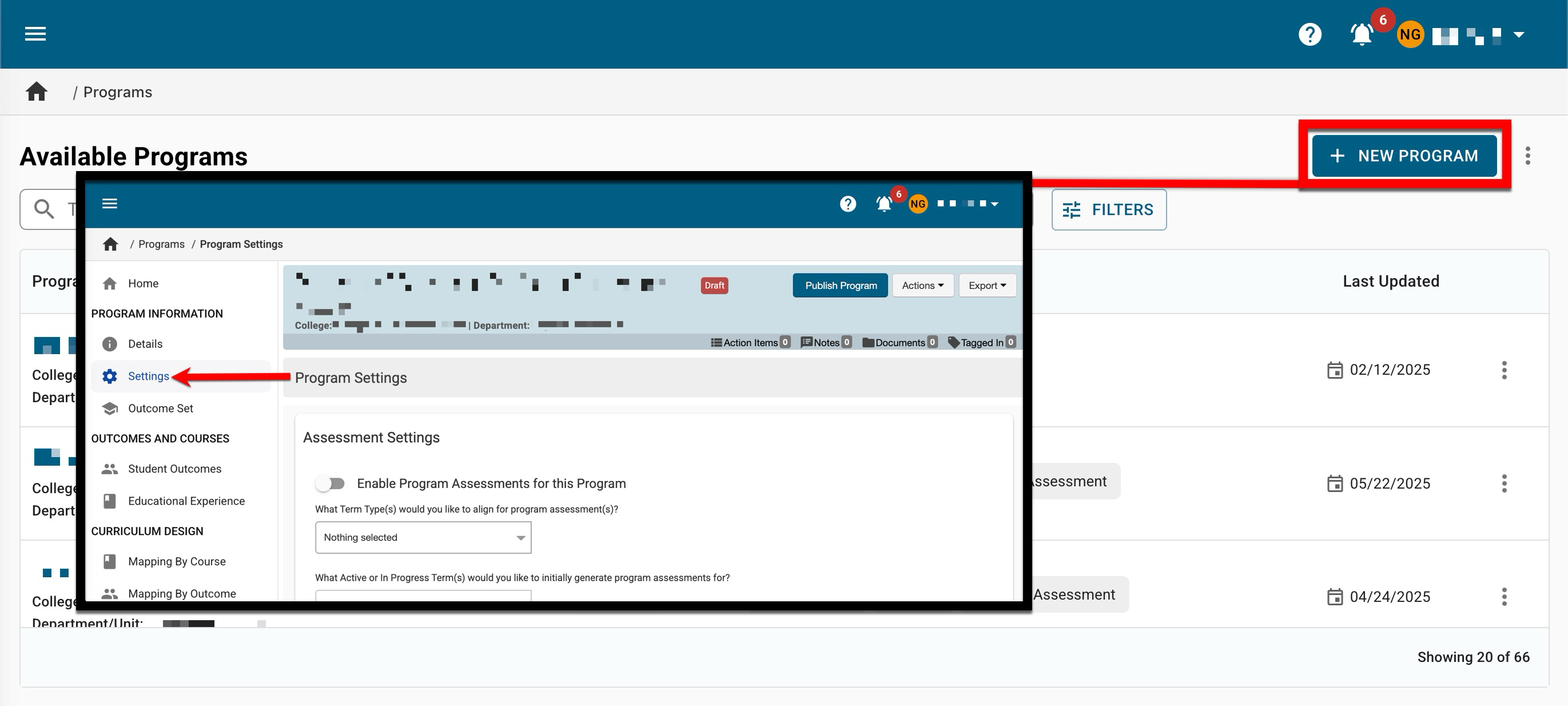
Create the Program Learning Outcomes (PLOs); these are the outcomes that will be assessed as part of a General Education Assessment. Learn more.
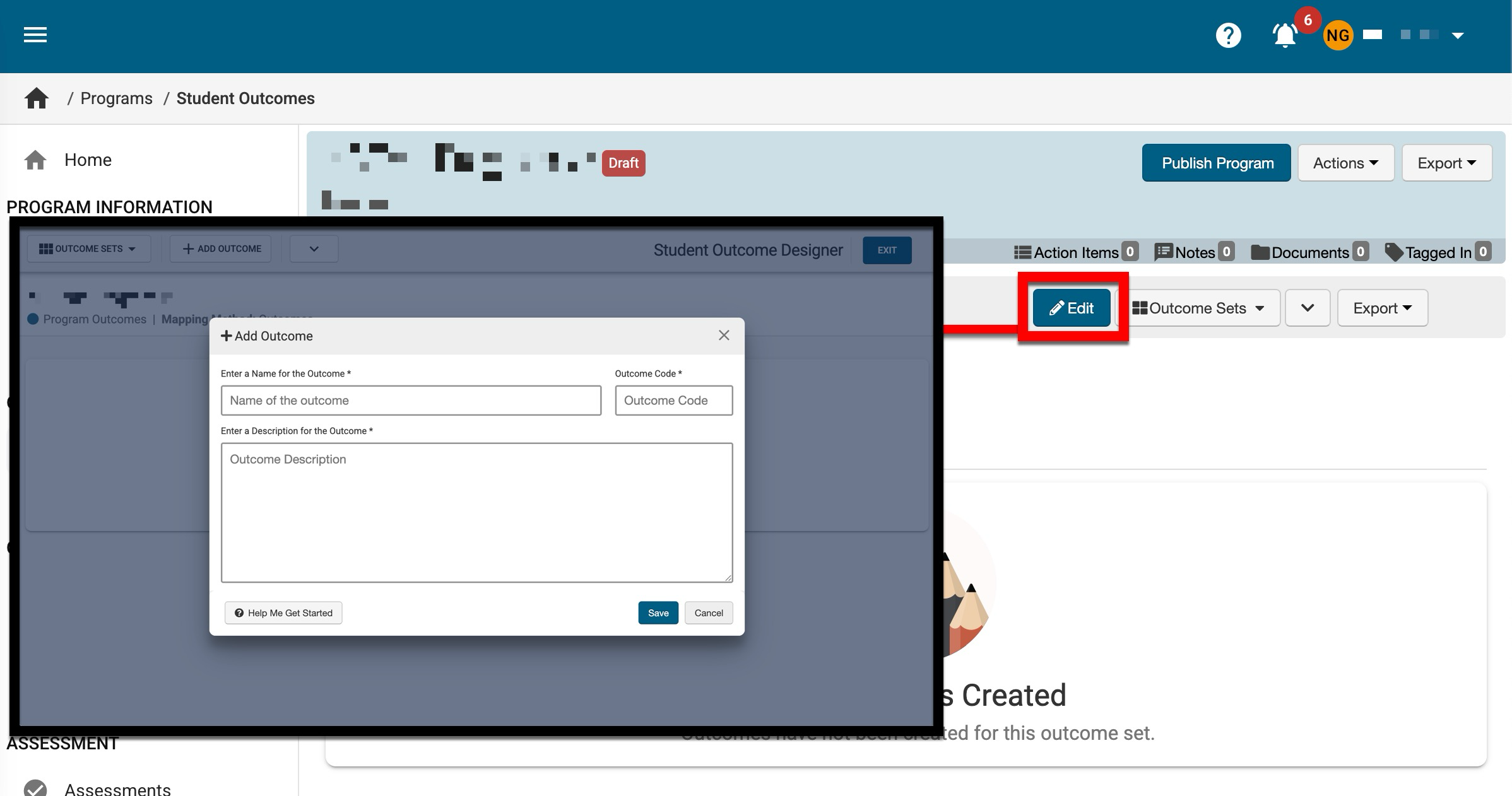
Next, add all the courses where the set of General Education outcomes will be assessed. Adding educational experiences categorizes the program's plan of study and aligns it with reporting parameters. Once the program has been assessed, reporting capabilities will provide insight into assessment results for educational experiences in required categories. Learn more.
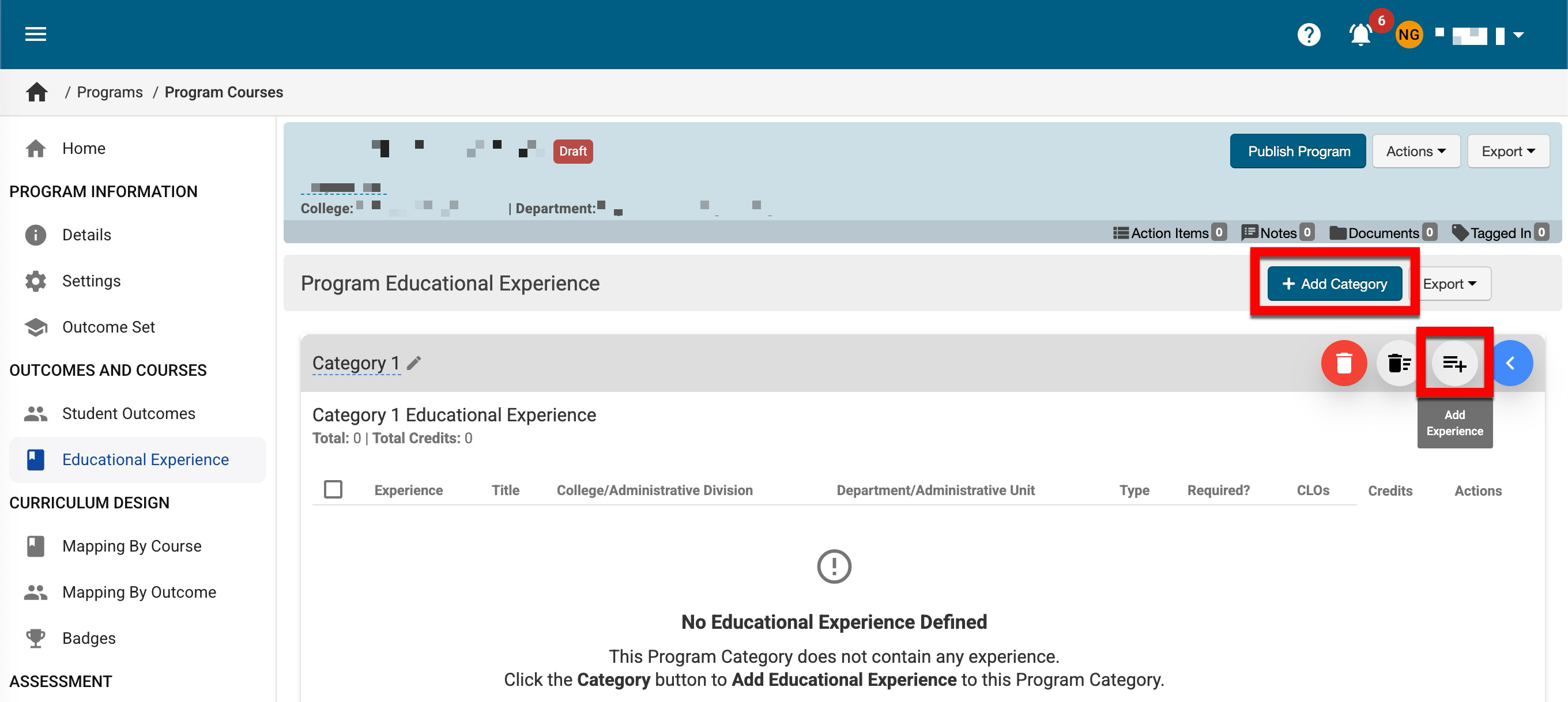
Once educational experiences have been added to the program, perform curriculum mapping. Mapping can be performed by course or outcome; regardless of which method is used, the Mapping by Course and Mapping by Outcome platform pages are interchangeable and will mirror each other. Learn more.
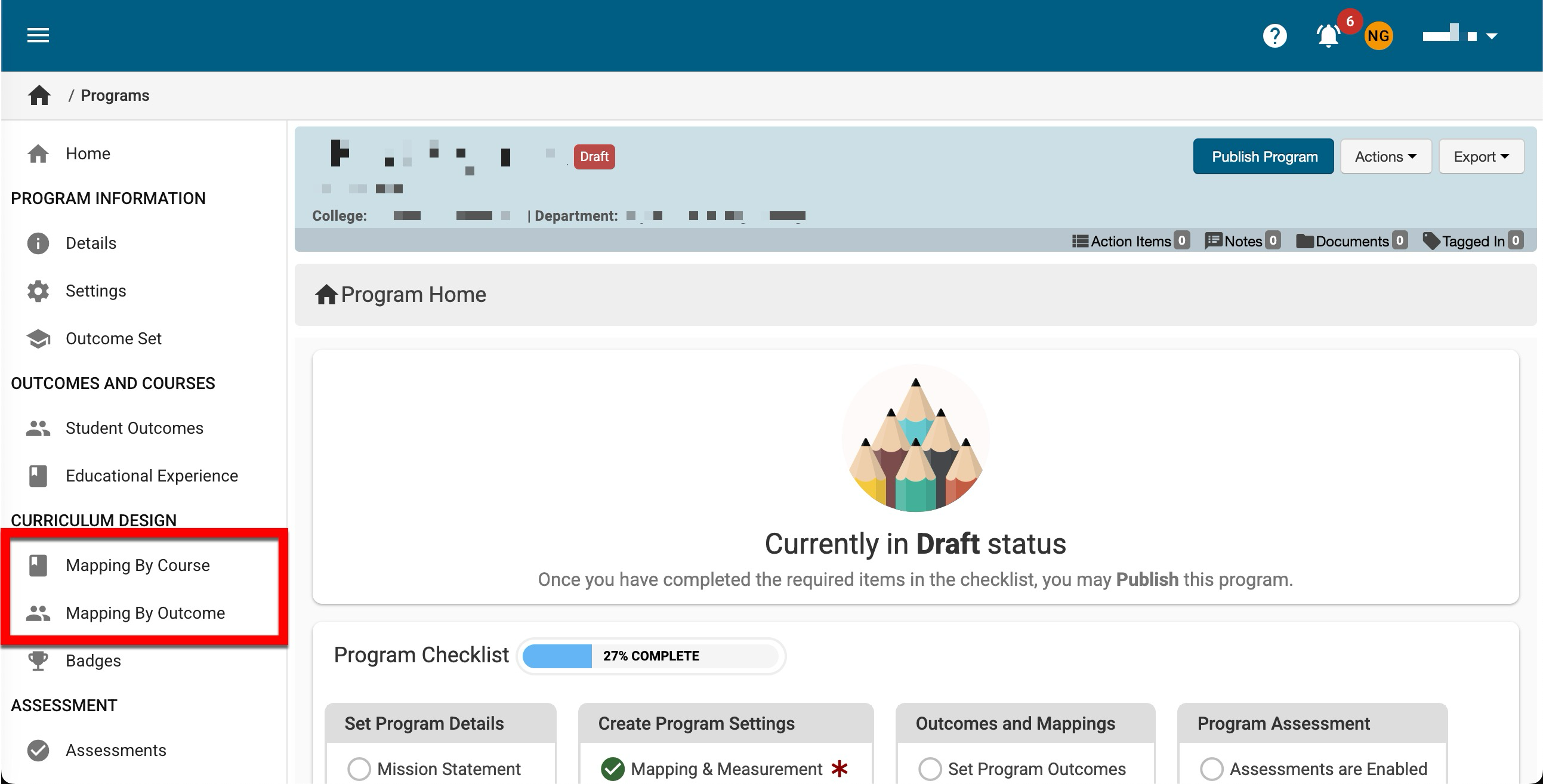
Finally, within the program, enable assessments via the Settings page and publish the program. Learn more.
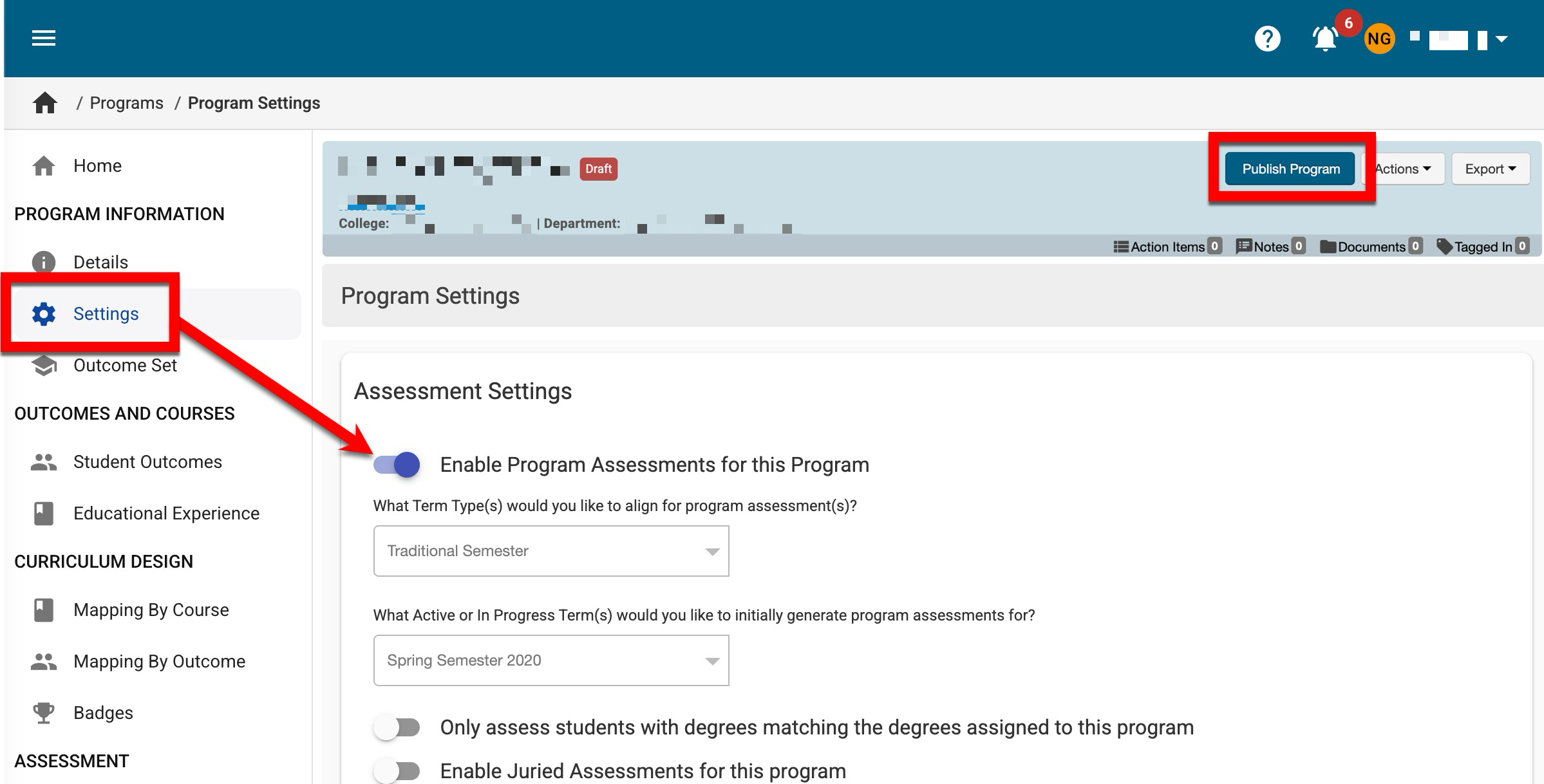
Perform assignment linking for the course sections that were associated with the program for assessment. Assignment linking supports assessment efforts by capturing direct assessment data by making connections to outcomes and standards. Learn more.
Finally, manage assessments via the Assessment Manager and review assessment data via the platforms assessment analytics functionalities:
Reports:
-
Direct Assessment Graphs Report
-
Student Outcome Achievement Report
-
Outcome Assessment Summary Report
Data Sets:
